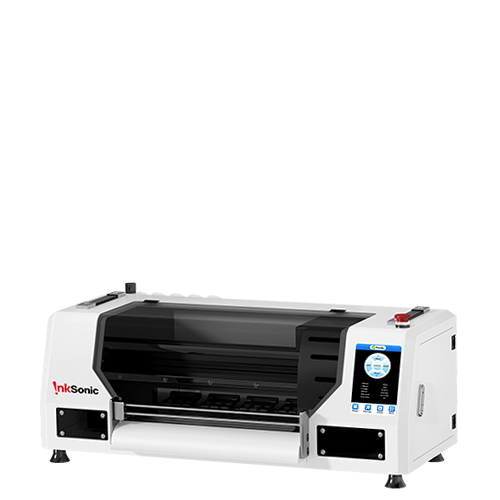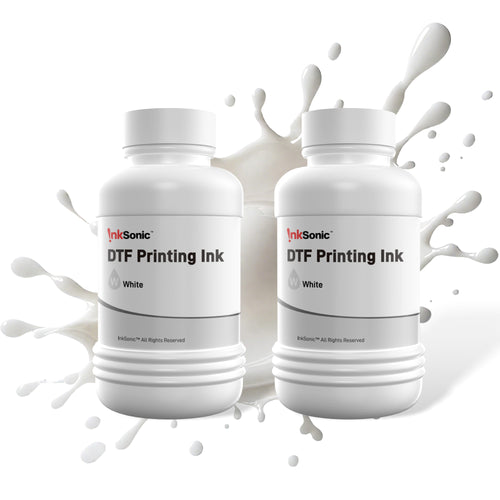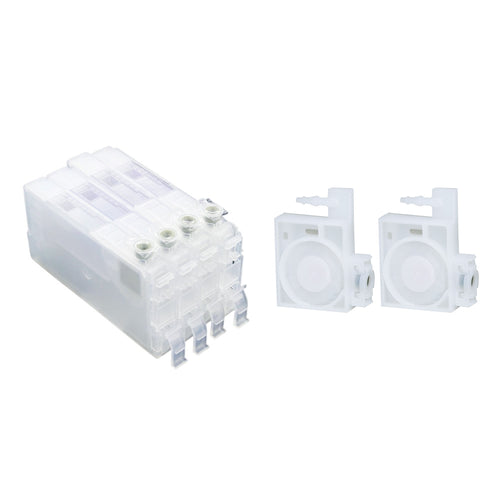1. Introduction
In the field of DTF (Direct to Film) printing, the InkSonic XP600 printer is widely favored for its stability and high performance. This article will guide you through the key components of the XP600 printer, common fault symptoms, quick inspection methods, and detailed upgrades we’ve made to enhance your experience in using and maintaining the equipment.
2 Printing Core Zone — The "Heart" of DTF Printing
2.1 DTF Print Head

Function: Accurately sprays ink and serves as the soul of the DTF printer.
Fault Symptoms: Banding, blurriness, color deviation, misalignment, or irregular images.
Quick Check: Conduct a nozzle test. Incomplete or uneven patterns may indicate clogging or damage.
Upgrade Highlights:
Higher precision nozzle arrangement (more nozzles).
Upgraded nozzle protection system to improve output precision and detail while extending print head lifespan.
2.2 Nozzle Cleaning Unit

Function: Caps the print head to prevent drying, maintain humidity, and automatically cleans nozzles during printing pauses.
Fault Symptoms: Slower ink suction response.
Upgrade Highlights:
Optimized ink path design for improved cleaning efficiency and reduced maintenance frequency.
Separate motor control for ink suction, allowing automatic refilling without issues caused by spring aging.
Replaceable ink pads, reducing consumable costs.
2.3 Ink Dampers and Cartridges

Function: Maintain stable ink flow and balanced pressure.
Upgrade:
Intelligent air vents added to the top of ink cartridges to automatically regulate internal pressure, ensuring smooth ink supply and better white ink stirring.
2.4 White Ink Circulation System
White ink contains a large amount of pigment particles and tends to settle. InkSonic XP600 ensures white ink stability through three core modules:
- White Ink Stirring Pump Motor

Function: Periodically stirs white ink to prevent sedimentation.
Fault Symptoms: Sediment buildup, ineffective stirring leading to nozzle clogging.
Quick Check: Listen for motor running sounds or observe ink movement inside the cartridge.
- Cylindrical White Ink Filter

Function: Filters pigment particles to prevent clogging.
Fault Symptoms: Faded prints or broken lines.
Quick Check: Remove the filter to check for blockage or discoloration.
Upgrade Highlights:
Cylindrical design with bottom-up flow increases filtration area by 400%, allowing more thorough filtering.
Multi-layer filter elements enhance filtration precision and extend print head life.
Visual filter housing for easy replacement monitoring.
White Ink Circulation Pump

Function: Continuously circulates white ink to prevent sedimentation.
Fault Symptoms: No ink flow, leading to print head clogging.
Quick Check: Observe ink movement and listen for pump operation.
Upgrade Highlights:
Hose connections are reinforced with clips to prevent hoses from bursting due to fast ink flow.
3. Motion Execution Zone — The Driving Force Behind Printing
3.1 CR Motor (Carriage Motor)

Function: Drives the print head horizontally.
Upgrade Highlights:
- Added cooling fins to the motor for long-term continuous operation.
- Extended motor lifespan.
3.2 PF Motor (Page Feed Motor)
Function: Precisely controls the advancement of the printing film.
Fault Symptoms: Image distortion or film tension abnormalities.
Quick Check: Ensure smooth film feeding.
Upgrade Highlights:
- Optimized structure virtually eliminates film stretching and wrinkling.
- Extended motor lifespan.
3.3 Rail and Slider System

Function: Supports print head movement and ensures alignment accuracy.
Fault Symptoms: Jerky motion or loud noise.
Quick Check: Manually push to check smoothness; apply lubrication as needed.
Upgrade Highlights:
Equipped with silent rails to reduce vibrations and improve printing stability.
One-piece molded design for structural stability, reducing deformation and errors, thus improving print quality.
3.4 Paper Pressing Device and Paper Pressing Roller

Function: During printing, the paper pressing device and roller stabilize the tension of the transfer film, preventing film lifting or wrinkling.
Fault Symptoms: Film shifting, wrinkling, or localized image blurring.
Quick Check: Observe whether the film remains flat during feeding.
Upgrade Highlights:
- Stronger pressing rollers for more even film pressure, preventing edge lifting and wrinkling.
- The pressing device further stabilizes the film during printing.
3.5 Printer Bezel

Function: Supports the output of printed transfer film and maintains ink stability by applying heat, preventing wet ink from smearing or overflowing onto the finished product.
Fault Symptoms: Film sagging, ink pooling, or scratched finished products.
Quick Check: The heating function is operating normally.
4. Electronic Control Zone — The "Brain" of the Machine
4.1 DTF Printer Mainboard

Function: Controls all components and coordinates operations.
Fault Symptoms: No response or no ink output.
Quick Check: Reboot and check if the machine powers on properly.
Upgrade Highlights:
Stronger computing power for faster task response and better handling of mass production jobs.
4.2 Print Head Board

Function: Manages print head commands and data transmission.
Fault Symptoms: No ink spray from part of the nozzles.
Quick Check: Check if cables are loose or damaged.
Upgrade Highlights:
Modular interface design for easier maintenance and lower repair costs.
Longer lifespan and supports high-intensity output.
4.3 Power Supply Unit
Function: Provides stable power to all modules.
4.4 Control Panel and Button Board

Function: Controls carriage movement and print head cleaning; displays printer status, including head temperature and environmental humidity for real-time monitoring.
Fault Symptoms: Unresponsive touch or buttons.
Quick Check: Verify if operations can be performed via RIP software.
Upgrade Highlights:
- Upgraded touch functionality with haptic feedback for a more comfortable and responsive experience.
- Improved screen anti-interference ability for clearer, more stable data display.
- Integrated humidity and temperature monitoring features.
5. Summary
The InkSonic XP600 DTF printer not only maintains a high standard in its traditional design but also elevates stability, durability, and user experience through comprehensive upgrades to core components. With a more streamlined internal layout and reinforced structure, it reduces maintenance costs and extends service life. Even under high-intensity operations or long continuous printing sessions, the XP600 delivers higher finished product yields and lower maintenance costs, providing users with an outstanding printing experience.


































